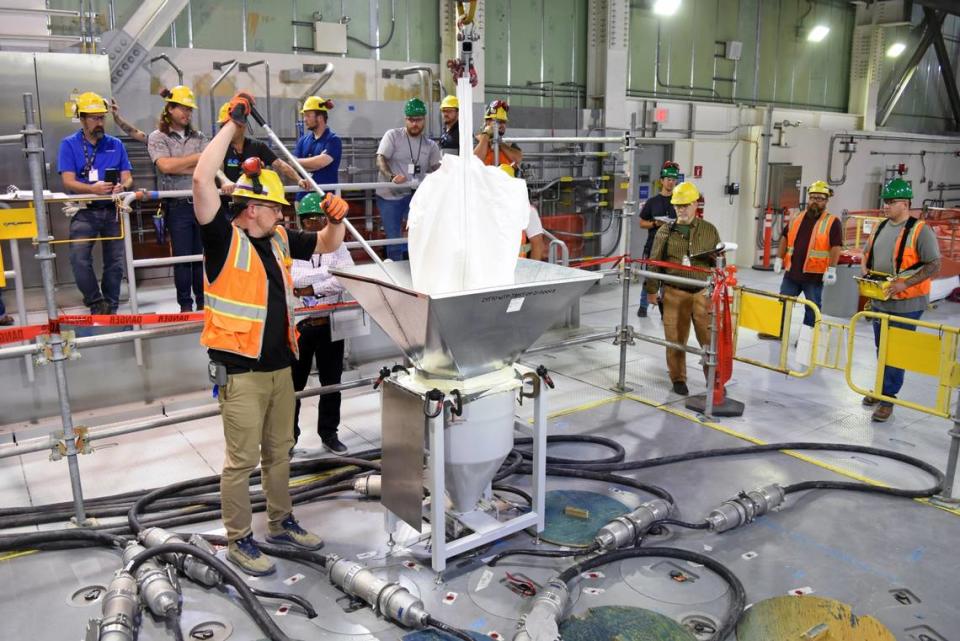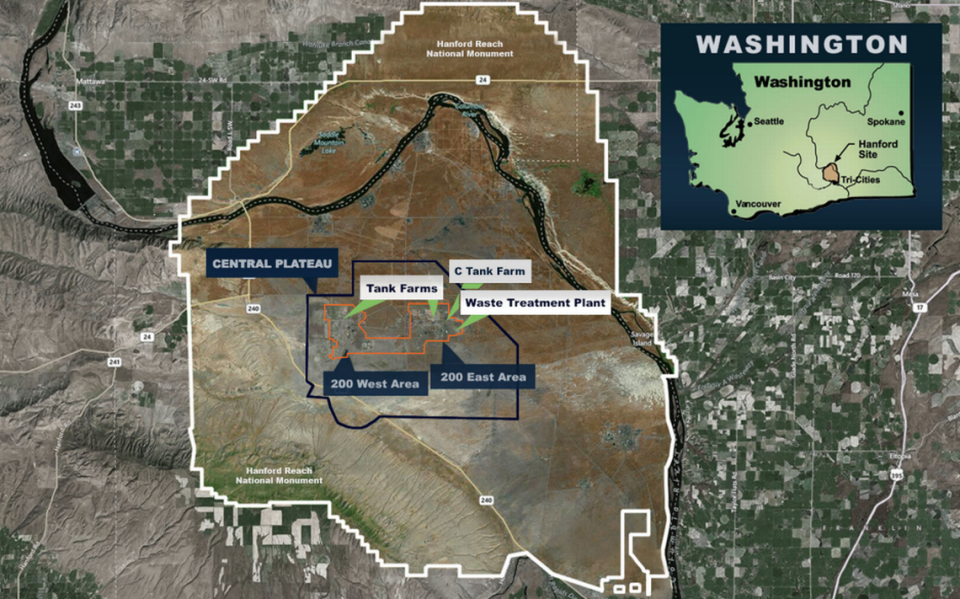300-ton Eastern WA melter reaches peak temperature to turn radioactive waste into glass
The Hanford site vitrification plant being built to treat radioactive waste now has two massive melters heated to full temperature of 2,100 degrees Fahrenheit.
The next step will be to begin running nonradioactive simulants through the Waste Treatment Plant, or vitrification plant, in a test of creating glass over the next several months.
The plant is expected to begin in 2025 to glassify some of Hanford’s least radioactive waste held in underground tanks. It will mix radioactive waste with glass forming materials to make a stable glass for permanent disposal of the waste.
“The work at the low-activity waste plant is at exciting times as it gets even closer to being operational,” said Suzanne Dahl, tank waste treatment section manager at the Washington state Department of Ecology, a Hanford regulator. “We look forward to the day that the vitrification plant is treating tank waste, making it much less of a risk to human health and the environment.”
Both melters are expected to operate continuously with staffing around the clock now until they reach their projected design life of about five years, when they will be swapped out with new melters.
The Hanford nuclear reservation site adjacent to Richland in Eastern Washington produced nearly two-thirds of the plutonium for the nation’s nuclear weapons program from World War II through the Cold War.
A byproduct of that wartime work was 56 million gallons of radioactive waste left from chemically processing uranium fuel to remove plutonium. The mix of radioactive and hazardous chemical waste is stored in underground tanks, many of them prone to leaking, until it can be treated for permanent disposal.

Initially, low activity radioactive waste will be separated from the tank waste and turned into a stable glass form at the vitrification plant. A federal court consent decree requires that treatment of high level radioactive waste also begin by 2033.
Bechtel National, the Department of Energy contractor building and commissioning the vitrification plant, got the second low activity waste melter to full heat in less than two weeks.
“By incorporating the lessons learned from the first melter, we have reached this historic milestone safely and efficiently, underscoring our commitment to excellence and safety,” said Brian Hartman, Bechtel project director of the vitirification plant.
The first melter heat up was stopped before temperatures reached 300 degrees when a problem was discovered with the power supply to its startup heaters. Work was halted for about eight months for a thorough troubleshooting process.
Work to construct the vitrification plant, which will have the world’s largest radioactive waste melters when they begin glassifying waste, began in 2002.

Each melter that is now at 2,100 degrees weighs 300 tons.
“This success is the culmination of years of employee expertise, ingenuity and commitment to advancing the cleanup mission and providing real return on taxpayer investment,” said Brian Vance, DOE’s Hanford site manager.

